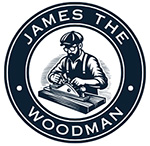G’day, I’m James, your local Queensland-based end grain cutting board specialist. I’ve been working with timber for over 30 years, and in that time, I’ve carved, sanded, and oiled more cutting boards than I can count. But I’m not just passionate about woodwork—I’m passionate about creating practical, long-lasting tools that make life better in the kitchen. One question I hear often from customers, chefs, and curious onlookers at markets is: Are end grain cutting boards actually better? Let’s take a deep dive into the answer, based on years of hands-on experience, craftsmanship, and customer feedback.
What Is an End Grain Cutting Board?
Before we compare, it’s important to understand what makes end grain different. Wood has three cutting planes: face grain, edge grain, and end grain. Face grain is the wide, flat surface of a board—the prettiest part often used for furniture. Edge grain is the long side and is commonly used for simpler cutting boards. End grain is the cross-section of the tree, where the growth rings are visible, and the wood fibres run vertically.
In an end grain board, those fibres are facing up. Imagine chopping into a bunch of upright drinking straws—that’s essentially what your knife is doing. Rather than slicing across the fibres, your knife slips between them. This seemingly simple detail has a huge impact on performance, durability, and the longevity of your kitchen tools.
Superior Knife Friendliness
One of the standout benefits of an end grain cutting board is its effect on your knives. Anyone who’s ever invested in a good chef’s knife knows how important it is to keep that edge sharp. The upright grain of an end grain board acts like a cushion. When you cut, the blade pushes between the fibres rather than directly against them, which reduces dulling and preserves sharpness.
In contrast, edge grain boards—although visually appealing and often cheaper—force the blade across the fibres. Over time, that constant abrasion wears down your knife edge, especially if you’re doing a lot of prep work. That’s why professional chefs and serious home cooks tend to reach for end grain.
Durability That Withstands a Busy Kitchen
Let’s talk about durability. End grain boards are self-healing to a surprising degree. Because the wood fibres move with the cut rather than resisting it, they tend to close up afterward. If you maintain your board properly (more on that below), you’ll notice fewer visible knife marks over time. That’s not magic—it’s just good timber and smart design.
Some of my customers in Brisbane and surrounds use their end grain boards every single day for years, and with a bit of regular oiling, they still look and perform beautifully. Edge grain boards and plastic boards often develop deep grooves that trap bacteria and moisture, leading to warping or cracking. End grain simply lasts longer and wears more gracefully.
Hygiene and Food Safety
There’s a common myth floating around that wooden boards aren’t as hygienic as plastic. That’s been thoroughly debunked. In fact, numerous studies—such as those from the University of Wisconsin—show that hardwood cutting boards naturally resist bacterial growth. Bacteria may sink into the surface, but it doesn’t multiply the same way it does on plastic. Given time, it often dies off entirely.
End grain boards, especially when made from dense hardwoods like spotted gum, ironbark, or blackbutt (my favourites here in Queensland), take it a step further. Their tight grain structure and natural antimicrobial properties make them a hygienic choice—provided you clean them properly. Warm water, a gentle scrub, and a thorough dry are all it takes. Avoid soaking or running them through the dishwasher; that’s the quickest way to damage the fibres and warp the wood.
Aesthetic and Craftsmanship
Let’s be honest—an end grain board is a work of art. The checkerboard pattern created by the cut ends of the timber is not only functional but also strikingly beautiful. Each board I craft is unique, with grain patterns, colour contrasts, and small imperfections that reflect the character of the tree it came from. When treated with food-safe oil and a touch of beeswax, these boards glow with warmth.
Many of my customers buy a board for cooking and end up leaving it on the counter permanently—not just for convenience but because it enhances the look of their kitchen. It’s both a tool and a feature piece. Edge grain boards can look lovely too, but they don’t have the same visual impact as end grain, especially over time.
Environmental Considerations
Sustainability matters to me and to many of my clients. I source timber locally whenever possible, using offcuts from larger projects or sustainable forestry sources. End grain boards, due to their durability, also reduce waste. One quality board can last decades, meaning fewer materials end up in landfills compared to plastic or low-quality bamboo alternatives that need replacing every year or two.
Plus, the oil used to maintain the board is natural and biodegradable. Compared to synthetic chopping mats or chemically treated imported boards, this is a win for both your kitchen and the environment.
The Investment Question
Yes, end grain cutting boards typically cost more than edge grain or plastic. But let’s think in terms of value, not just price. A properly maintained end grain board can outlast multiple cheaper boards and extend the life of your knives. You’re not buying just a chopping surface—you’re investing in something that protects your tools, enhances your kitchen experience, and looks fantastic doing it.
I’ve had customers come back five years later just to tell me their board is still going strong and has become their favourite kitchen tool. That kind of feedback is what keeps me going. It’s about creating something meaningful and useful, not just decorative.
Proper Care for Long-Term Use
Caring for your end grain board doesn’t require special skills, but consistency helps. Here’s what I recommend:
- Clean immediately after use with warm water and a gentle cloth or brush.
- Dry thoroughly—never leave it wet or sitting in water.
- Oil regularly—I use a blend of food-grade mineral oil and beeswax, which penetrates the wood and keeps it hydrated.
- Avoid extremes—keep it away from dishwashers, direct sun, and prolonged moisture exposure.
With these simple steps, your end grain board can serve you faithfully for many years.
Conclusion: Yes, They’re Better—And Worth It
So, are end grain cutting boards actually better? From where I stand—covered in sawdust in my Queensland workshop—the answer is a resounding yes. They’re gentler on knives, more durable, naturally antibacterial, and frankly, a joy to use and behold. While the upfront investment might be higher, the long-term value, beauty, and practicality make it worthwhile.
If you’re looking for a cutting board that will become an essential part of your kitchen—and maybe even something to pass down—consider going end grain.

